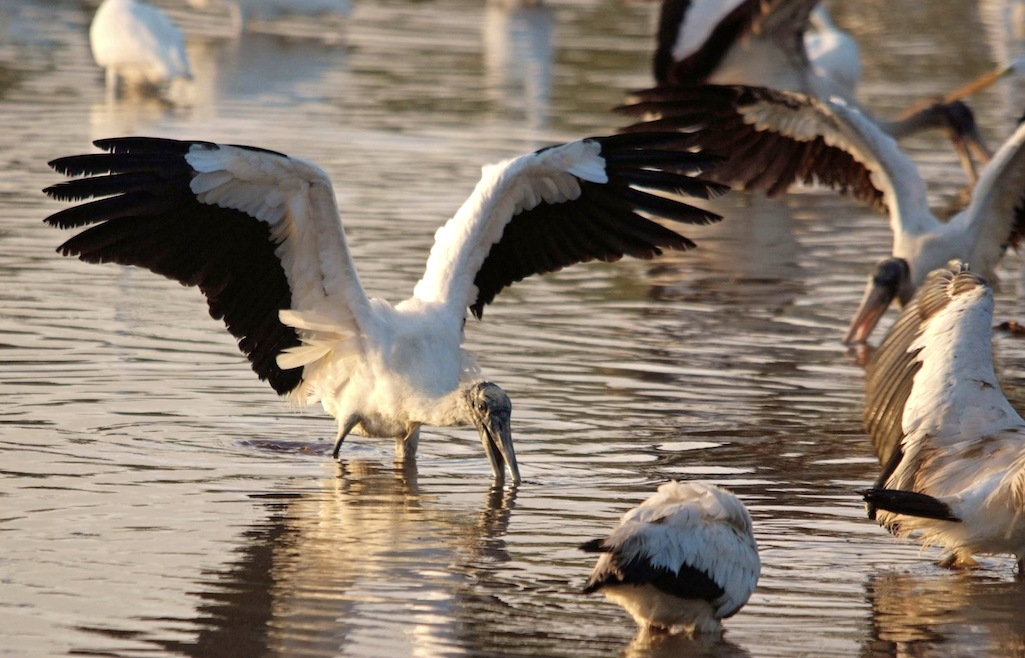
Wood storks have recovered their overall population numbers to merit removal from the Endangered Species List, according to the US Fish and Wildlife Service.
Long-legged and gangly, with oblong bodies, bald heads, and a long, curved bill, wood storks won't likely win any beauty contests. But they nevertheless are a poster child reflecting the success of the Endangered Species Act, as the U.S. Fish and Wildlife Service is proposing that the species be removed from the list of threatened and endangered wildlife.
“The wood stork is recovering as the result of protecting its habitat at a large scale,” Assistant Secretary for Fish and Wildlife and Parks Shannon Estenoz said earlier this week after the Fish and Wildlife Service announced the news. “This iconic species has rebounded in part because dedicated partners in the Southeast have worked tirelessly to restore ecosystems, such as the Everglades, that support it.”
According to Interior, the wood stork faced extinction when listed in 1984 under the Endangered Species Act. The population decreased from 20,000 nesting pairs to less than 5,000 pairs, primarily nesting in south Florida’s Everglades and Big Cypress ecosystems. Today, the wood stork breeding population has doubled to 10,000 or more nesting pairs and increased its range, including the coastal plains of Mississippi, Alabama, Florida, Georgia, South Carolina and North Carolina. These long-legged wading birds more than tripled their number of nesting colonies from 29 to 99 in their expanded range. They’ve adapted to new nesting areas, moving north into coastal salt marshes, old, flooded rice fields, floodplain forest wetlands, and human-created wetlands.
If the wood stork is delisted, the Migratory Bird Treaty Act, the Clean Water Act, and state environmental regulations will continue to protect this species and the wetland habitats it depends upon. The ESA requires the Service to implement a post-delisting monitoring plan for a minimum of five years to ensure the species remains stable.
"The wood stork is an iconic Everglades indicator species that has been showing consistent signs of improvement over the years," said Everglades Superintendent Pedro Ramos in an email. "This proposed rule not only recognizes the wood stork’s recovery, but also the improving conditions in the Everglades and other Southeastern wetlands due to the well-coordinated efforts of many federal, tribal, state and local partners to restore and protect these areas.”
Interior officials noted that this proposed delisting reinforces the importance of restoration programs in the Everglades and Big Cypress ecosystems (Comprehensive Everglades Restoration Plan) and other ecosystem restoration efforts throughout the Southeast. The CERP enacted by Congress in 2000 remains among the highest national conservation priorities for the Service. Delisting the wood stork would not change the Service’s focus on the Everglades restoration, as CERP will continue to focus on restoration that can support robust wood stork breeding within the Everglades and Big Cypress ecosystems.


